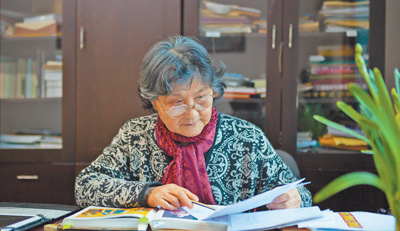Photo shows Qian Xiaoping, a national-level inheritor of the national intangible cultural heritage of Song brocade weaving techniques. (Photo courtesy of the interviewee) At night, the ancient district of Suzhou city, east China's Jiangsu Province, shines brightly under city lights. Young people stroll through its historic alleys and waterways, dressed in "new Chinese-style" clothing made from Song brocade.
At a Song brocade cultural park, visitors flock to purchase bags and scarves crafted from Song brocade. Just nearby, a weaving workshop hums with activity, as over 100 looms work overtime to fulfill orders. Song brocade, known for its elegance and soft texture and named after the Song Dynasty (960-1279) as it was when the craft was invented, is one of China's three major traditional brocades, alongside Yun brocade and Shu brocade.
Recently showcased in the autumn/winter 2024 (AW24) China Fashion Week, it has captivated audiences with its exquisite designs. However, this craft was once on the brink of extinction. In 1998, the last Song brocade factory in Suzhou closed its doors.
Across the street from this shuttered factory lived Qian Xiaoping, a senior engineer who had worked to preserve silk artifacts. Faced with the potential loss of this art form, she resolved to "resurrect" Song brocade. Starting with a single fragment of brocade found in an antique shop, she successfully revived the ancient weaving technique and introduced innovations to breathe new life into the craf.



















